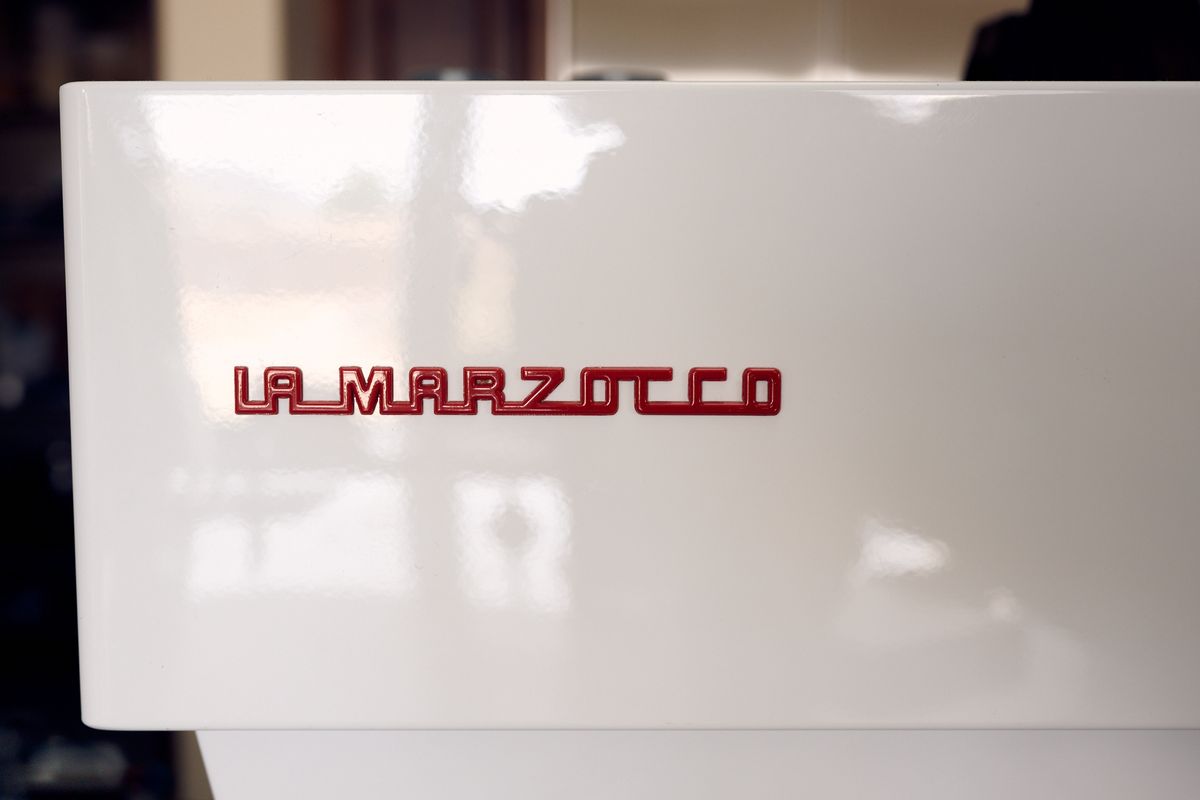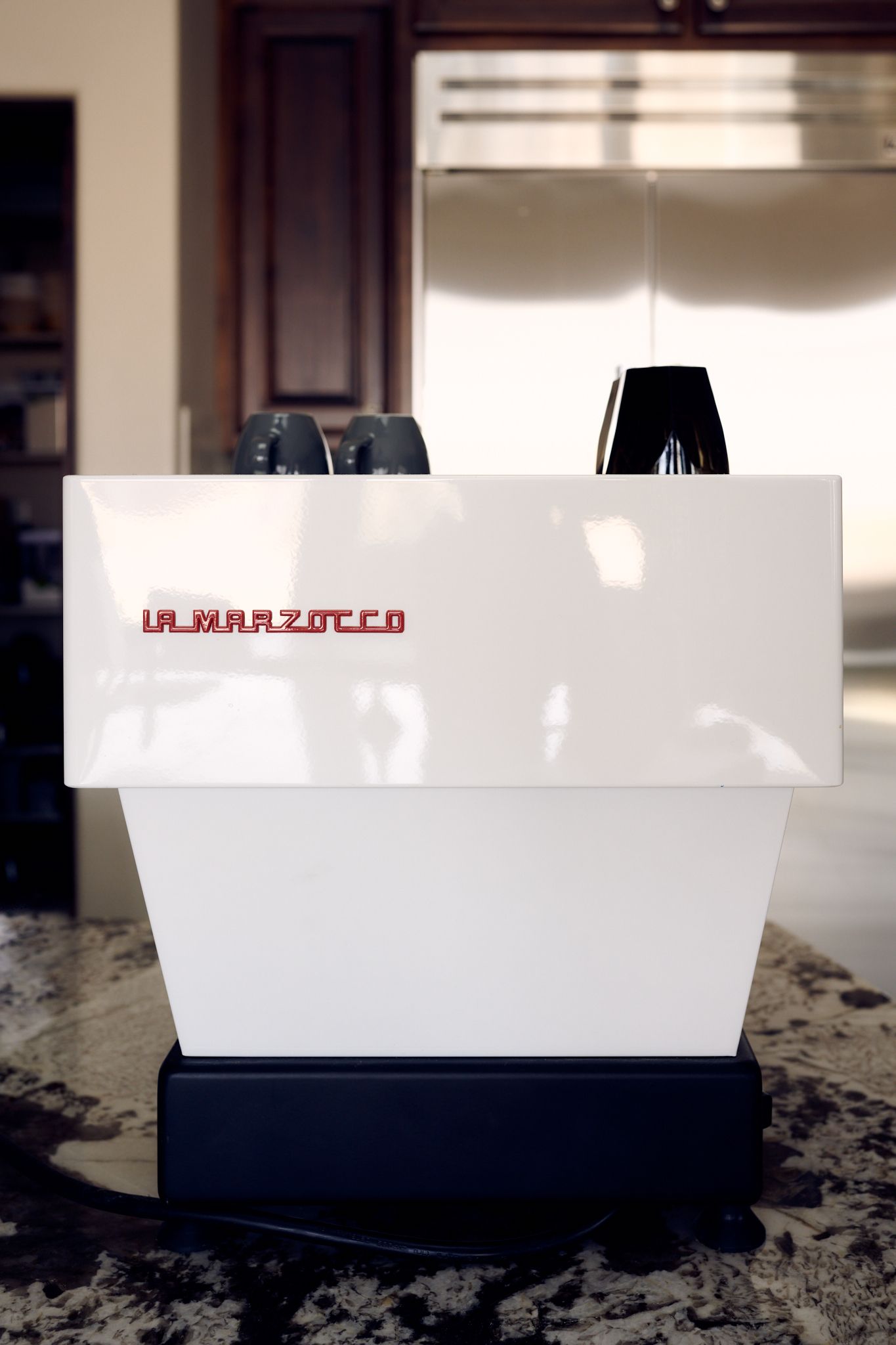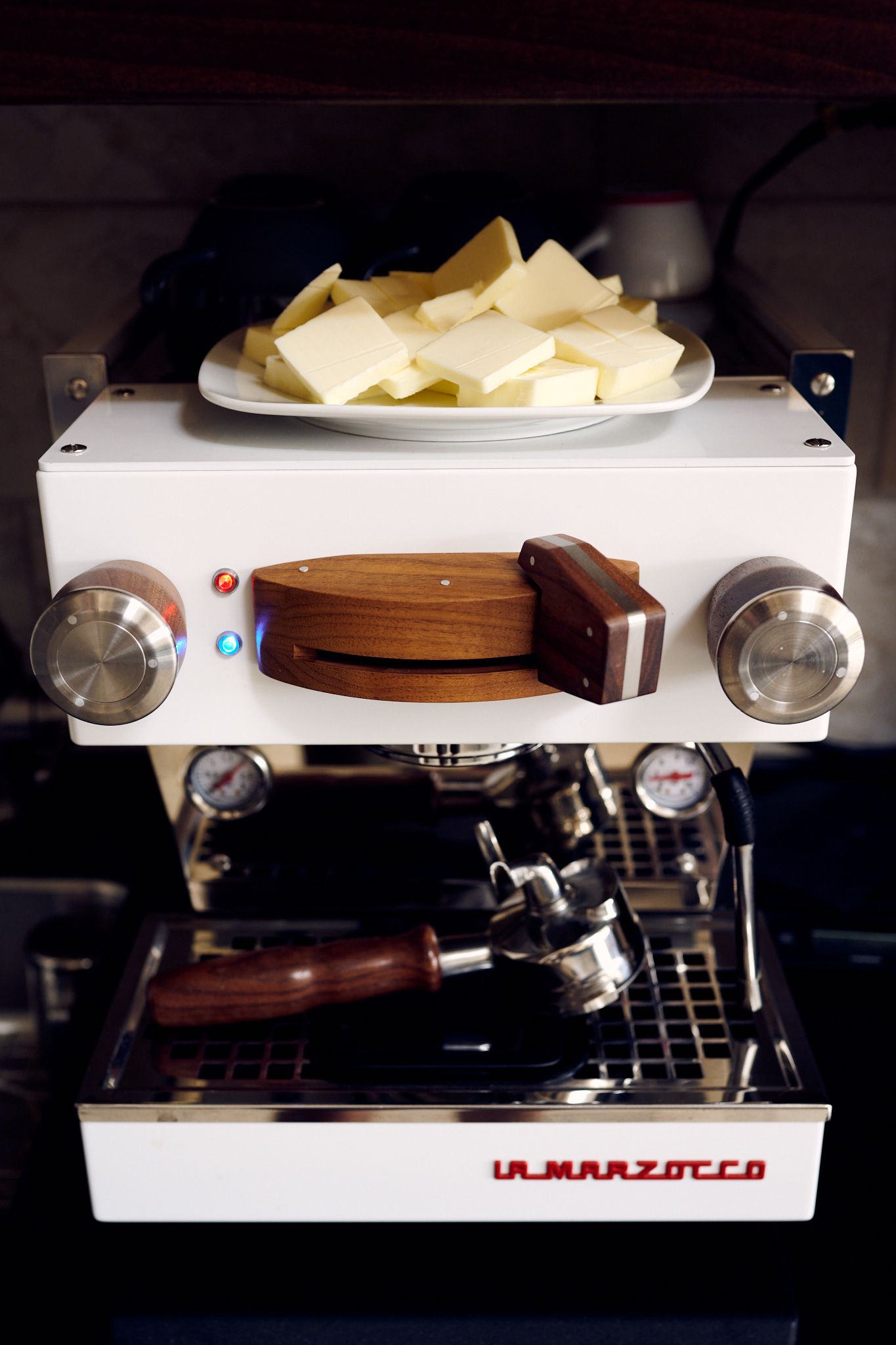The Best Coffee Machine I've Ever Owned, and Why I Sold It.
The La Marzocco Linea Mini is such an incredible espresso machine, when it doesn't need maintenance.

In my eyes, the La Marzocco Linea Mini was the pinnacle of home espresso machines.
Since its announcement in 2015, I wanted one. At the time, I had been using a Rancilio Silvia (single group, single boiler, no PID 😱) at home for over 10 years. The Silvia is well-known in coffee circles because it felt like one of the first proper espresso machines for the home. When I bought it, you couldn't order one easily online. I had to buy it from a seller in Italy on eBay. It felt like very early espresso-at-home days, when there was first talk of WDT (Weiss distribution tool), polishing your coffee puck after tamping with an exaggerated spin of the tamper, and last but not least, beautifully roasty Black Cat coffee ordered online from Intelligentsia before it was commonplace to do so.
So in 2015, finally, a machine that was seemingly created for the home coffee enthusiast (nut?). I've visited countless cafes worldwide, often seeing the La Marzocco lion emblem on machines so beautifully crafted and making coffee so good I dreamed of having one in my home someday. Though I knew it wasn't possible. They would be overkill for mere mortals. Instead, they're machines manned by the best baristas and in the best cafes.
When the Linea Mini was released, I said to myself, finally! This will be my end-all espresso machine. The one I'll buy and grow old with. The one I'll learn inside and out. Learning to navigate its quirks (they all have quirks), doing my own repairs, and pulling the best espresso every time.
Unfortunately, as it often goes, things don't always go to plan.

The Flavor, The Texture, Oh My
On my best day with the Rancilio Silvia, with all the conditions just right, I might be able to pull the often-called "god shot." That is espresso so delicious it was as if the heavens parted and the thick, syrupy black gold came oozing from some magical place. But believe me, all the conditions had to be right—and this often felt like playing the coffee lottery with a $1 scratcher, and winning. The Rancilio had mediocre temperature consistency at best. You had to time your brew just right, pulling the shot right when the boiler clicked off, and you knew "it was time."
It was a machine that afforded you zero sloppiness. You had to be attuned to its signs: the sounds, the indicator lights, the way the boiler clicked on and off; if you were distracted or weren't listening, bad coffee for you.
On the other hand, the Linea Mini is much like a modern mirrorless camera with a massive sensor and dynamic range so wide you can make an erroneously under-exposed shot look fantastic in post-processing. It's more like the cutting-edge Sony camera and less like the exactingly handcrafted, deliberate-requiring Leica M series cameras. The Linea Mini lets sloppiness creep in; your attention can be elsewhere—anywhere—and you will still get phenomenal coffee.
The Linea Mini's electronics, complicated internals, and sensors-in-the-loop make most of this happen. It's a machine that knows what you want before you do. It has precise temperature control thanks to its design and PID control (proportional, integral, and derivative for fellow engineers). Brew and steam pressure is always spot on and at the ready, thanks to its dual boiler design. All of this boils down to a machine that sets the perfect stage for brewing coffee at every curtain pull (or paddle activation).
The engineer in me indulged without restraint in this modern mastery of coffee. I made coffee with a refreshing depth of flavor, like that ultra-ripe orange in the winter that defines logic or that slice of sourdough bread that shouldn't be possible to make at home.
All of the above (and probably more I'm failing to put into words) is why I think the Linea Mini is one of the best coffee machines for the home.
How I Used the Linea Mini
Given the aesthetic beauty of the machine and the tactile joys, like activating the paddle for brewing or spinning the wooden steam knob, it was just wonderful to use it daily. And daily I did for a little over 5 years.
I left the machine on 24/7, ready to make a coffee at any time of day. There's indisputable extravagance in this convenience, the ability to walk in and make a cafe-quality coffee at any moment—pure, unadulterated indulgence. However, I never once took this for granted throughout my five years of owning this machine. It never got old, and every single time I gave in and satisfied the machine's call, I reveled in the fact that I had this capability, and gosh did I enjoy every coffee I ever made.
The reality is, though, that I'm a person who is extremely sensitive to caffeine. Though not any caffeine, just the sort from coffee (by contrast, I can drink green tea all day without much trouble). I've tried to shrug this off, make excuses, and continue to drink coffee willy-nilly. But later, I'd pay the price with agitation or restless sleep.
Owning the Linea Mini is kind of like having a Ferrari in the garage that only sees the road once a month.
Over the years, I've slowly dialed back my coffee consumption—for the better. I'll go through periods where I'll have 2 or 3 "one shot" espressos if I'm pushing through a serious workload (like my cookbook), but usually, it's one cappuccino in the morning kind of day. And I love this; it's the best time for coffee (and if you talk to Italians, the only time for coffee + milk), and I savor that morning ceremony. But I think this gets to the core of my problem with the Linea Mini: the machine is designed—no, it wants—to be used constantly. It demands attention to keep the nuts, bolts, gears, vacuum breakers, solenoids, and all the complicated innards working at their peak.
Owning the Linea Mini is like having a Ferrari in the garage that only sees the road once a month. Drive the thing!

My Linea Mini Maintenance Problems
Before we dig into the downside of its ownership, which I must say, felt more like it owned me than the other way around, I'm pretty sure I got a lemon.
The first two years of ownership were pure bliss. I did the weekly backflushes, the monthly deep cleans, and the 6-month really-deep-cleans. I knew what I signed up for , I had been cleaning my Silvia similarly for a decade. And thus, with the Linea Mini, I had zero problems even with constant use.
But somewhere near the end of the second year, I started having problems.
What, You've Never Heard of a Gigleur?
First, it was a clogged gigleur. I'm kind of surprised it didn't happen earlier, to be honest. This little piece has a small hole where water passes through during brewing. The hole restricts and regulates the water heading from the boiler to the meticulously prepared coffee puck. Restricting flow prevents a blast of hot water from completely decimating your fussy coffee puck, which would cause coffee to scatter everywhere. This is a good thing. However, because the hole is so tiny, it clogs with scale constantly—especially if your water is not adequately softened.
If you're a professional barista or cafe owner, you know how important water is for an espresso machine. I did, and I thought my home filtration and softening system was up to snuff. Well, it wasn't.
I found a local technician (shoutout to Espresso Bob) who stopped by, took the piece apart and schooled me on my first gigleur cleaning maintenance, which should probably happen yearly.
After this first gigleur service, I switched from using tap water (in my defense, it was softened by my home softener) to distilled water treated with Third Wave Water mineral additives. This is the best water a machine can have, all the minerals you want for flavor and texture, but not so much as to wreak havoc on your espresso machine.
After this first service, from there on, it was one thing after another.

A Complete Rebuild
Fast forward a few minor maintenance things I fixed myself, and by this time, I had a pretty good handle on opening up the machine and working here and there. Let's also skip past another technician visit to fix low pressure. But after these, I then started having major leaks around the group (the area of the machine where you lock in the portafilter with coffee). I did some remote debugging with my technician, and he determined, given this new leak and the past problems, I probably needed a complete inspection and cleaning of the machine—and I agreed. I saw white calcification here and there, and I had the machine for about 3 to 4 years at that point. It was time for an overhaul.
So I dropped the machine off and said goodbye for several weeks while he worked his magic. When I got the machine back, it was beautiful and ready to go. And go it did. No leaks. No gurgling. No excess water in the drip tray. It was a beautiful thing—and again, so was the coffee.
One fine morning about six months later, at 5:30 a.m. I began my morning coffee preparation practice. Coffee was ground finely, distributed evenly, and tamped with the appropriate pressure. A puck meticulously prepared. I locked in the portafilter and flipped the paddle to brew. Just then, water sprayed out of the back of the machine like a wild garden hose suddenly turned to full pressure with no one holding the end.
A Sheared-Off Brass Fitting
Long story short... I got in and determined a line leading from the boiler was dangling freely. So I emailed La Marzocco directly, sending pictures and a description, and was told my machine was an early build with brass fittings which have since been replaced with more robust steel fittings. Really?
Now, La Marzocco has incredible customer service, which I cannot fault. They reply fast and offer to fix most things on their dime, which is rare nowadays. I appreciate that in this world of automated emails, Zendesk bug reports, and endless customer service "chats" with a robot. But it sure would have been nice to have been informed about these inferior fittings so we could replace them if desired. No one wants an open garden hose in the kitchen.
La Marzocco sent me the repair parts after several weeks of delay. I wrenched in the fix and was back in business. After the fix, I told myself one more problem, and I was done.
Like clockwork, six months later, another maintenance fairy landed on my machine and determined it was time. This time a busted solenoid (I get it, this happens, but this was the 4th one I had replaced).
Why I Sold The Linea Mini
I don't want to sound all doom and gloom in this post. Having the Linea Mini was a joy every single day. When it wasn't leaking or gurgling or spraying water everywhere, it was offering me "god shots" with such precision it was astonishing. I felt like that inhuman barista pulling coffee I probably shouldn't have been able to at home. I loved the machine. I still love the machine despite its service woes. It indeed was the best coffee machine I've ever owned.
Here was my final farewell, the day before I shipped it out to be rebuilt and resold.
Should You Buy The Linea Mini?
I think the Linea Mini is a remarkable machine for the professional setting, where it's used daily to pull shots in succession as customers flow in through the doors. It's great for the coffee enthusiast who drinks multiple cups daily, has guests over often to wield the machine, or is in a multi-person coffee-drinking household. And also an enthusiast who is okay with, and even enjoys, getting in and maintaining their espresso machine often.
However, for the home coffee maker that I am, it's a bit overkill. I see the machine almost like a high-performing sports car. If it can't be exercised enough on the road and wrenched on in the garage, it's probably not a good fit. And much like an old petrol sports car, a liability even, as much as it cringes for me to say that.
For me, and my penchant for manual things and slowing down (I do work with multi-day fermented doughs, after all), I've moved on to something else: the Olympia Cremina manual lever espresso machine. It has zero backflushing and a drastically reduced maintenance regiment, but is also handcrafted and maybe even a bit more joyful to use. But I'll talk about this more soon.
I still feel like La Marzocco is an incredible brand, and their machines are in top contention for the best in the world. Their Italian legacy and contribution to the craft cannot be denied. In the end, the machine just wasn't a right fit for me in my kitchen.
I know I'll miss the joys of flipping the paddle for brewing, the depth of flavor in each cup, and the satisfaction of having a built-by-hand engineering marvel ready at my beck and call, but I certainly won't miss the dread of another leak, hiss, or gurgle.